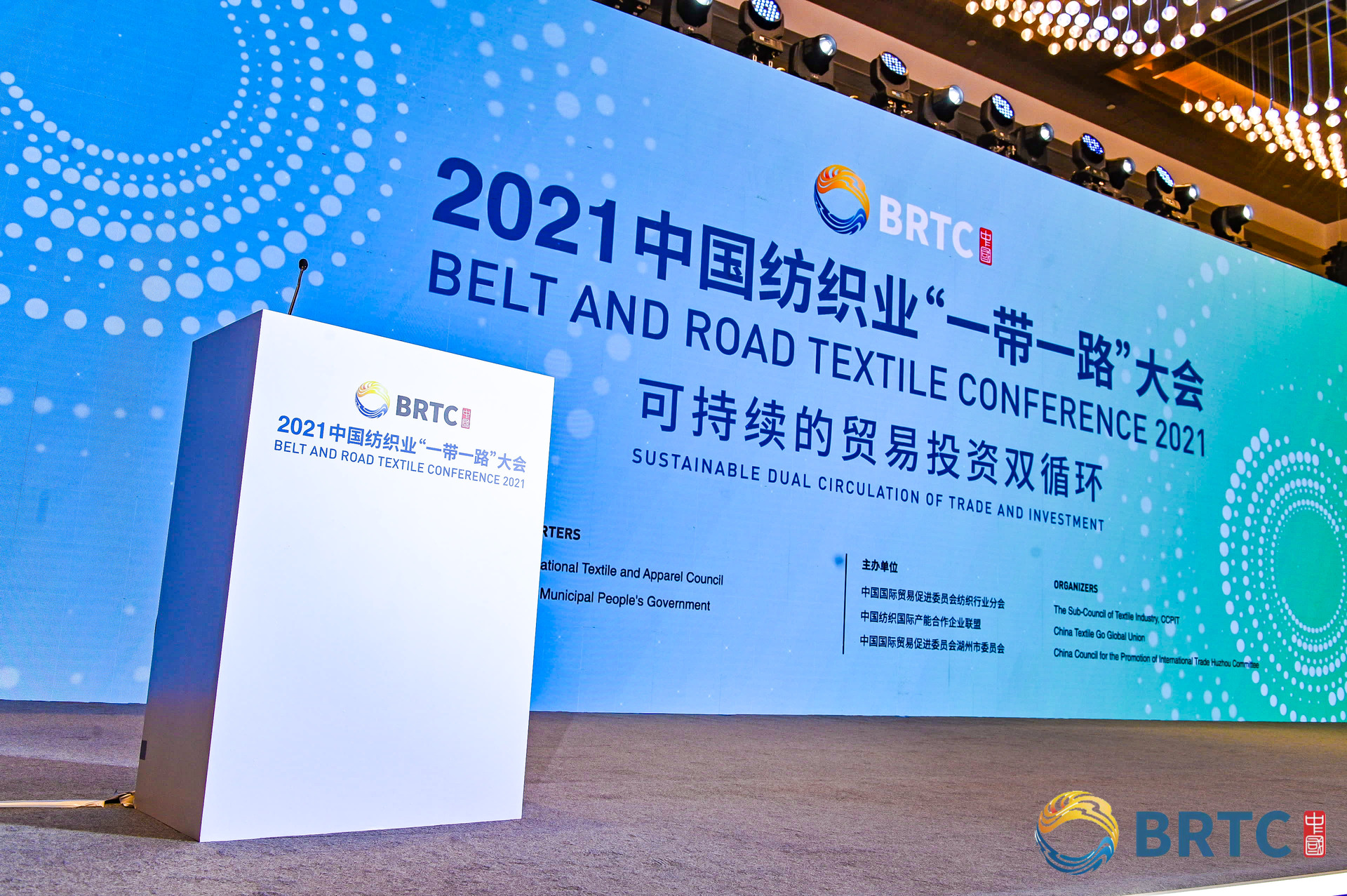Belt & Road Textile Conference 2021 successfully concludes in China
Source: https://www.fibre2fashion.com/ Date: 2021-11-03

The Belt and Road Textile Conference 2021 that was held in Huzhou, Zhejiang province on October 15, saw the participation of government officials from ministerial and local levels, and representatives from the China National Textile and Apparel Council (CNTAC), foreign government agencies and business associations, and industry-leading companies.
Themed on ‘Sustainable Dual Circulation of Trade and Investment’, the conference aimed to accelerate the integration of domestic and international trade with a focus on increasing domestic demands, assess policy trends for industry growth, and launch insightful guidelines.
The conference was guided by CNTAC and the Huzhou Municipal People’s Government and hosted by the Sub-Council of Textile Industry of China Council for the Promotion of International Trade (CCPIT TEX), China Textile Go Global Union (Union), and CCPIT Huzhou Committee, the organisers said in a media release.
Xu Yingxin, vice chairman of CNTAC and chairman of CCPIT TEX, stated that this year marked the 8th anniversary of the Belt and Road Initiative (BRI). Since its launch in 2013, the initiative has become one of the largest platforms for international cooperation with the most countries involved, bringing huge opportunities and dividends to all countries in the world. China’s textile and apparel sector has played a leading role in the Belt and Road Initiative with fruitful cooperation along the route. Since 2000, the total foreign direct investments (FDIs) of the sector have exceeded $11 billion, of which more than 70 per cent have flowed to countries along the Belt and Road route.
Xiang Lemin, deputy mayor of Huzhou Municipal People’s Government, noted that under the guidance of the China National Textile and Apparel Council, the modern textile industry in Huzhou has taken steps towards high-quality growth. It has established a whole supply chain that encompasses all processes from raw materials, weaving to end products. The annual output of the industry exceeds 70 billion RMB, and four textile companies in the city have gone public. The Huzhou government encourages local companies to ‘go global’ by participating in the BRI.
Cao Xuejun, a senior official from the department of consumer goods of the ministry of industry and information technology (MIIT), said that the textile industry in China should focus on enhancing the competitiveness of domestic companies, strengthen the awareness of risk prevention and control, and build a supply chain that features mutual benefits and win-win cooperation, so as to explore diversified markets.
Gao Yong, secretary general of CNTAC, gave a keynote speech on ‘A New Era Leading to a Sustainable Dual Circulation of Trade and Investment in Textile Industry’ at the event. He observed that the textile industry has witnessed extraordinary outbound investments and cooperation in the past two years despite the heavy blow dealt by COVID-19, and that the industry has managed to resume work and production despite challenging circumstances.
According to Gao, outbound direct investments (ODIs) in China’s textile industry reached $950 million, a year-on-year increase of 101.3 per cent, accounting for 11.5 per cent of the outbound investments in the country’s manufacturing sector. Sector performance varied though. Outbound direct investments in the textile and apparel sector and clothing accessories sector totalled $80 million, which remained the same as last year, accounting for 8.4 per cent of the total of the textile industry. ODIs in the textile sector reached $250 million, a year-on-year decrease of 26.5 per cent, accounting for 26.3 per cent of the total. While the chemical fibre manufacturing sector saw a total of $620 million outbound direct investments, a year-on-year increase of 1027 per cent, accounting for 65.3 per cent of the total. Hong Kong China, Vietnam and Singapore were main investment destinations. He also highlighted the need to upgrade the industrial base, modernize the supply chain, and enhance high-end manufacturing capabilities.
In the first session of the Conference, representatives from governments, institutions and enterprises from home and abroad gave speeches on ‘Sustainable Cross-Border Investments in Textile Under the Belt and Road Initiative’, which presented opportunities for experience exchanges and cross-border cooperation.
Dr Moses Ikiara, managing director at Kenya Investment Authority (KenInvest), A Sukumaran, chairman of the Joint Apparel Association Forum (JAAF) in Sri Lanka, Qian Anhua, chairman and general manager of Antex (Deqing) Fashion Co, Ltd and Chen Yan (Karen Chen), CEO of Challenge Fashion (Pakistan) Limited attended the conference.
Zhao Mingxia, Vice President of Industrial Economy Research Instituteat CNTAC, shared her views on challenges and opportunities facing China’s textile and apparel industry in foreign trade and investment patterns in her speech ‘Demand Trends in the International Textile and Apparel Market’.
The conference also witnessed the issuance of the report, African Countries’ Textile Industry Development Capabilities and the Cooperation Potential between China and Africa in Textile Industry, and an establishment ceremony of the first batch of overseas liaison offices of the China Textile Go Global Union. It analyses 54 countries in Africa from a multi-dimensional perspective, establishes a model evaluation system to further study the industry conditions and trade and investment environment in eight key countries with investment and trade potentials (Egypt, Ethiopia, Kenya, Morocco, South Africa, Nigeria, Nigeria, Tanzania and Tunisia). The report also discussed cooperation opportunities between China and Africa.
To give better play of the Union as a platform for further cooperation, the Union decided to set up overseas liaison offices in Egypt, Cambodia, Myanmar, Vietnam, and Zambia, which were announced at the conference.











